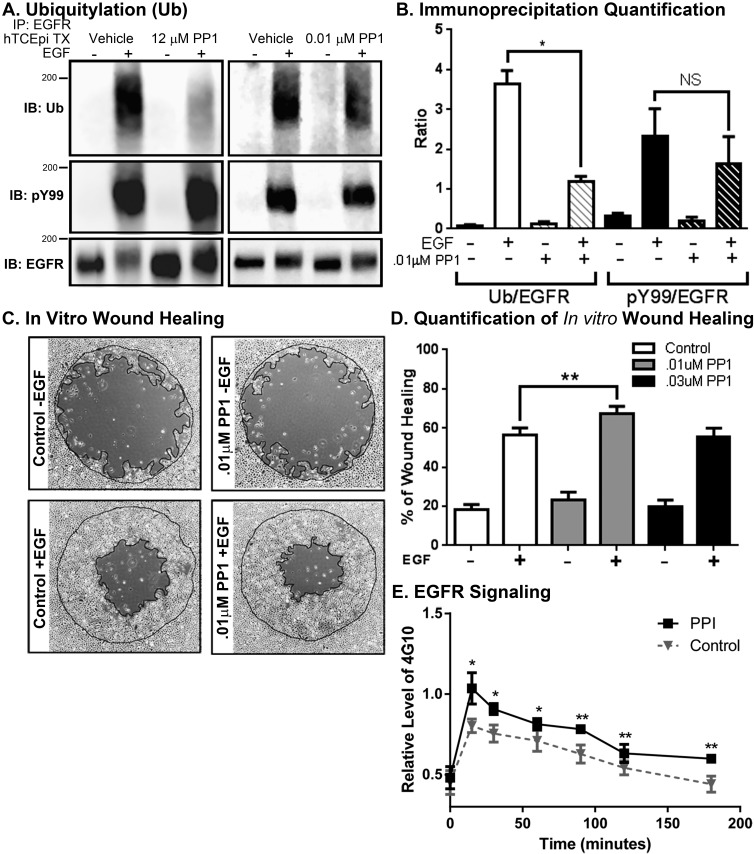Figure 4.
The Src inhibitor PP1 enhances migration and attenuates ligand-dependent EGFR ubiquitylation. (A) Human telomerase-immortalized corneal epithelial cells were pretreated without or with 12 μM (left) or 0.01 μM (right) as indicated. Cells were treated without (−) or with (+) 100 ng/mL EGF for 10 minutes. Cell lysates were prepared and immunoprecipitated with EGFR. The immunoprecipitation was divided into thirds, resolved by 7.5% SDS-PAGE, transferred to nitrocellulose, and immunoblotted with antibodies against Ub, pY99, and total EGFR. Shown are representative experiments repeated at least three times. (B) Quantification of EGFR after treatment with 0.01 μM PP1. Data are plotted as the ratio of ubiquitylated EGFR to total EGFR (Ub/EGFR) and phosphorylated EGFR to total EGFR (pY99/EGFR) (average ± SEM; n = 3). Data were analyzed with a paired Student's t-test. *P < 0.05. (C) Brightfield images of hTCEpi cells in vitro healing assay taken at 16 hours with and without EGF (10 ng/mL) after pretreatment of PP1 at various concentrations. (D) Cell migrations were analyzed as the difference in area from the plug removal (outer line) compared with 16 hours of EGF treatment (inner line). Data are plotted as the average ± SEM of area covered (wound healed). Analysis by a paired Student's t-test. **P < 0.05; *P < 0.1, n ≥ 3 with three to five replicate values. (E) The kinetics of EGFR phosphorylation were monitored with an ELISA assay. Plotted are the levels of phosphotyrosine activity associated with the isolated EGFR (average ± SEM, n = 4).

